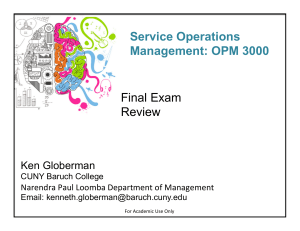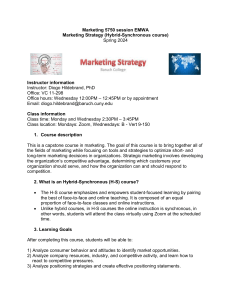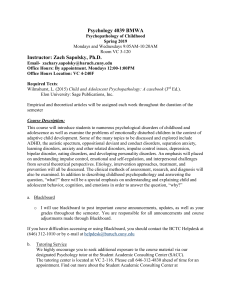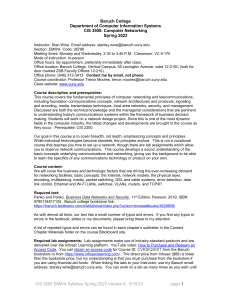INCORPORATING THE STAKEHOLDERS INTO THE LEARNING PROCESS: COURSE
advertisement
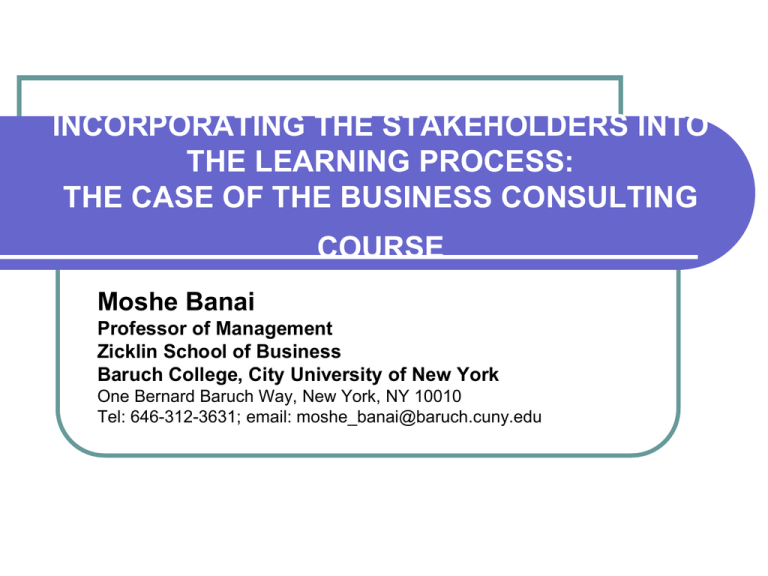
INCORPORATING THE STAKEHOLDERS INTO THE LEARNING PROCESS: THE CASE OF THE BUSINESS CONSULTING COURSE Moshe Banai Professor of Management Zicklin School of Business Baruch College, City University of New York One Bernard Baruch Way, New York, NY 10010 Tel: 646-312-3631; email: moshe_banai@baruch.cuny.edu The course: Background Twenty four to thirty two best MBA students formed into teams of four Teams investigate client organizations to provide management and employees with answers to business and organizational problems Course is instructed by two professors: one with a wide theoretical knowledge and another with a vast business and consulting experience The course: Clients Clients included large and small organizations such as: Microsoft Delloitte Touche Federal Home Loan Bank of New York CUNY Con Edison Standard and Poors Barr’s pharmaceutical company Big Apple Limousine The Course: Problems Visited The problems reviewed: launching new products Increasing market share Country’s entry mode Gaining customers loyalty Analyzing financial instruments Recruitment and selection of employees Quality control The Course: Time Table The course is run over 28 meetings The first 12 meetings are dedicated to: Forming teams Assigning teams to projects Instruction of theory and practice (examples) Preliminary sites visits Definition of projects’ objectives The Course: Time Table The next 12 weeks are dedicated to: Refining projects’ objectives Strategy and methodology formulation Instruments design Observations Document analysis Interviews Questionnaires The Course: Time Table The next 12 weeks (Continue): Data Collection Data Analysis Interim Report writing Receiving Feedback from Clients The Course: Time Table The last 4 meetings are dedicated to: Presenting project reports to clients in class Receiving feedback from clients in class Clients evaluation of projects Conclusions and exit Making it Work To ensure commitment clients pay $500.00 to cover students expenses To ensure quality students must complete 26 credits to qualify Groups are formed to include students with diverse backgrounds (majors) Each team presents its project to the whole class throughout the process to facilitate cross-teams learning Teams provide ideas and feedback to the other teams to increase creativity Making it matter Students learn to: Manage a project Manage time Survey databases Use research tools Write a report Make public presentations Work as a team Work in cross-teams (competition and cooperation) Making it matter Instructors learn: Up-to-date management methods and practices Environmental changes (political- legal, economic- competitive, societal- cultural, technological, ecological) New real time cases to be used in future classes Making it matter Clients receive value for money Students experience real life management processes and ethical dilemmas Students experience consequences beyond grade College receives recognition and reputation Each project report could be used for writing a case study
